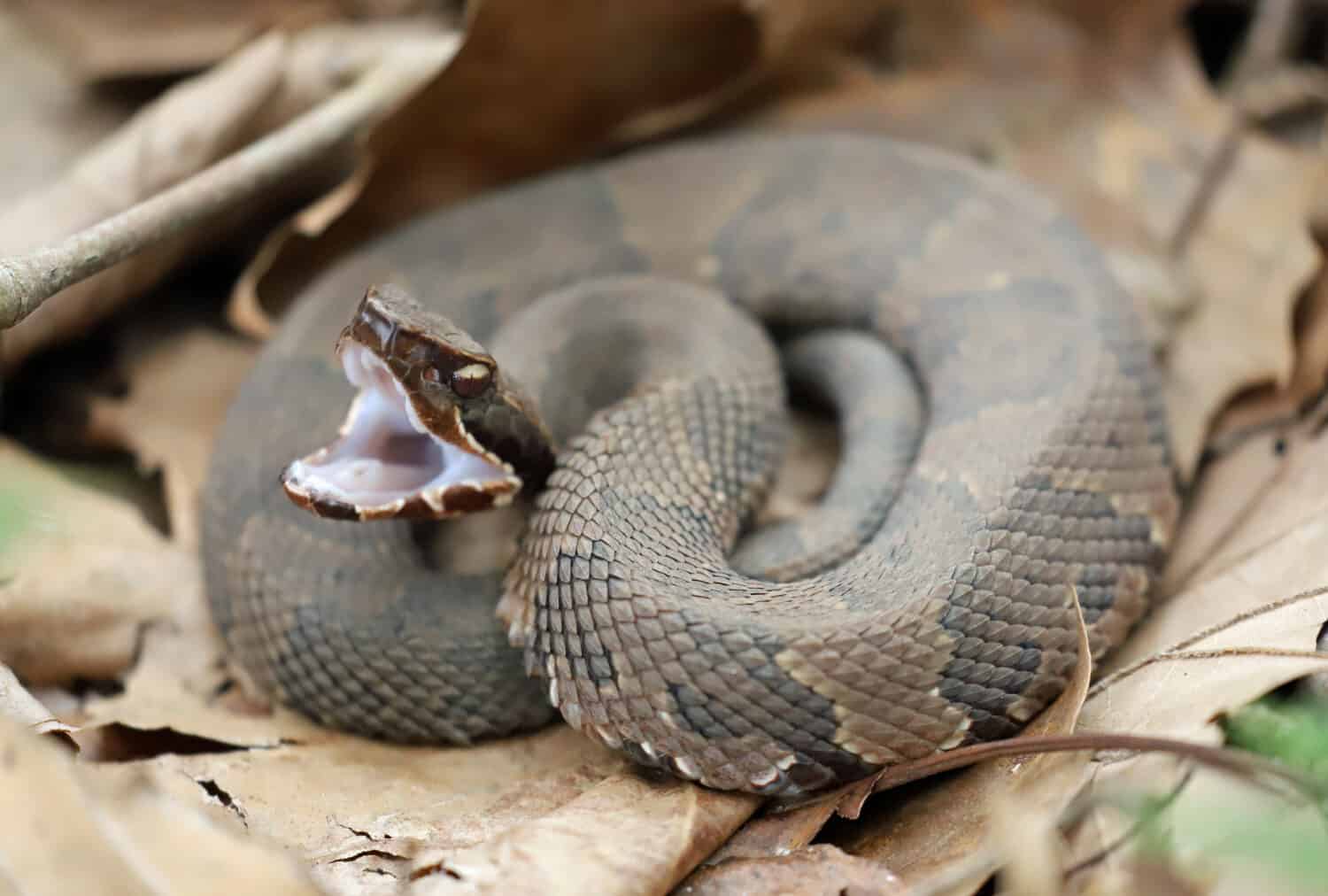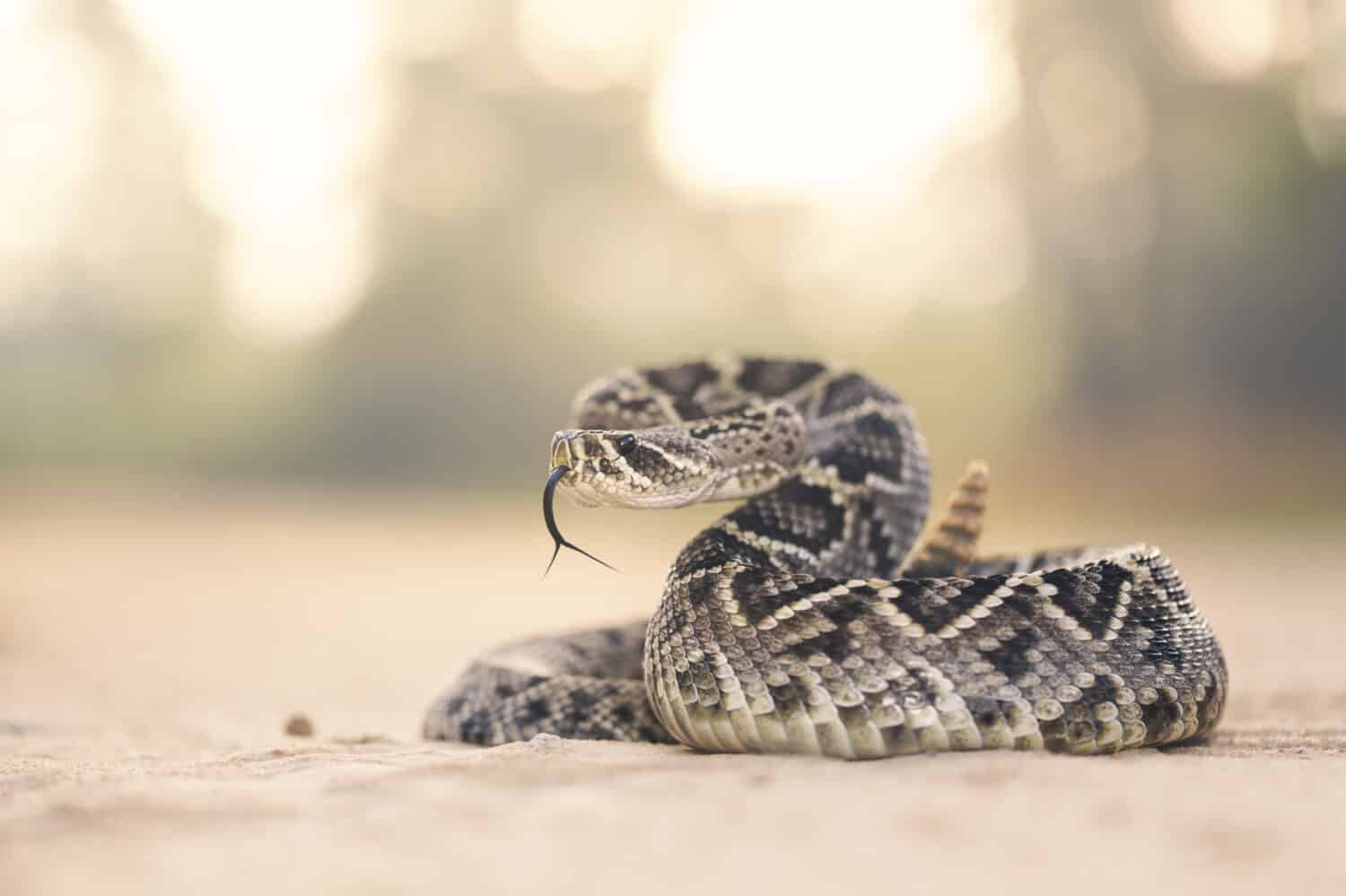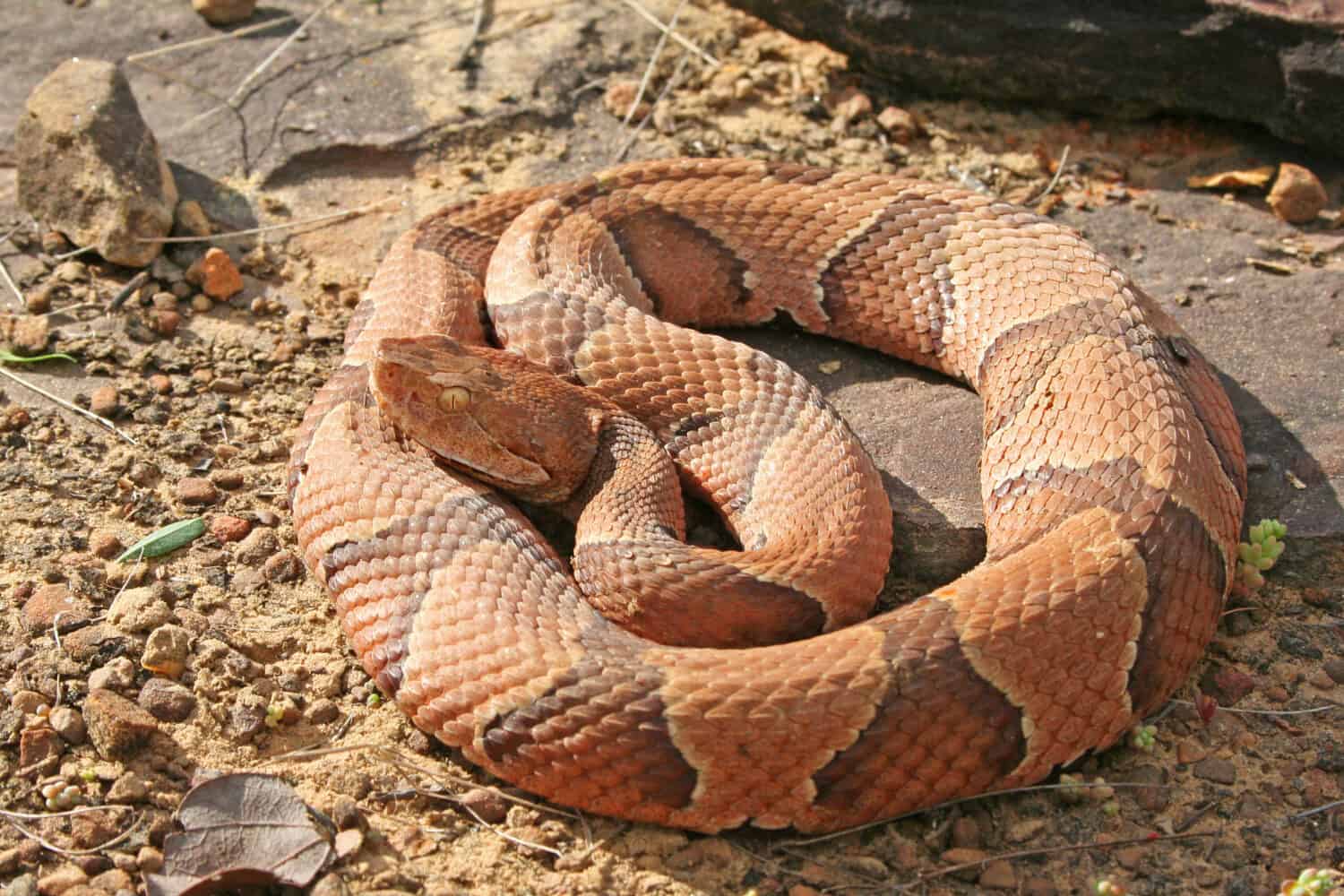Alabama is located in the southeastern United States, with Mississippi to the west, Georgia to the east, and the Florida panhandle to the south. The state is known for its historical monuments, beaches, and forests. It has many nicknames including the Heart of Dixie, Cotton State, and Yellowhammer State.
Alabama has no shortage of areas to enjoy the great outdoors, from visiting the Gulf shores of southern Alabama to taking a float trip along one of the state’s many rivers. Alabama is home to a diverse amount of wildlife, including around 40 species of snake. Of these snakes, only six are venomous. You may run into any number of snakes in these five rivers in Alabama.
1. Alabama River
The Alabama River begins near the capital city of Montgomery, where the Tallapoosa and Coosa Rivers join together. It flows for about 45 miles before joining with the Tombigbee River, which eventually empties into Mobile Bay.
The Alabama River is teeming with life. It is home to species of fish such as crappie, catfish, and several different varieties of bass. Other interesting creatures such as paddlefish and alligator gar swim in its waters. In fact, at least 184 fish are native to the Alabama River System, according to the American Fisheries Society.

The Alabama River flows through Huntsville.
©Nagel Photography/Shutterstock.com
These fish are an attractive meal for a variety of water snakes. Many of these species are nonvenomous, however, the Alabama River area is also home to more dangerous creatures such as northern cottonmouth snakes. Explore the list below to discover snakes you may encounter near the Alabama River:
- Midland water snake
- Plain-bellied water snake
- Diamond-backed water snake
- Queen snake
- Brown water snake
- Banded water snake
- Northern cottonmouth
- Gulf salt marsh water snake
- Mississippi green water snake
- Gulf swamp snake
Out of all these species, only the northern cottonmouth is venomous, though some nonvenomous snakes may bite when threatened.
2. Mobile River
The Mobile River can be considered part of the lower Alabama River system. When the Alabama River flows west and unties with the Tombigbee, it forms the Mobile and Tensaw Rivers, which empty into Mobile Bay.
With this in mind, the Mobile River has many of the same snakes as the Alabama River. Like the Alabama River, one of the only venomous snakes near the river is the cottonmouth. These snakes gained the nickname water moccasins after their love of swamps and other aquatic habitats. They are the only venomous semiaquatic viper in the world.

Cottonmouths are named after the white lining visible when they open their mouths.
©KF2017/Shutterstock.com
Cottonmouths may be found sunning themselves on logs or stones near the water’s edge. They prey on a variety of creatures such as fish, lizards, birds, and mice. Contrary to popular belief, cottonmouths aren’t particularly aggressive.
According to the Orianne Society, these snakes typically employ defensive techniques, hoping to scare potential threats away before resorting to biting. The snakes hold their mouth open, displaying the white lining that gave the creature its name. Cottonmouths may also vibrate their tails, producing a sound similar to that of a rattlesnake.
3. Styx River
The Styx River in Alabama flows for a little over 40 miles in the southern part of the state. It is located about 40 minutes from the Gulf of Mexico. The body of water gets its name from the River Styx of the Underworld in Greek mythology.
Located in Baldwin County, the Styx River is a popular spot for recreational activities such as tubing, canoeing, kayaking, and fishing. Despite this, there are a number of snakes humans may come across near the Styx River.
In July 2018, a 23-year-old man named Justin Clarke was rushed to the hospital after being bitten by a diamondback rattlesnake (most likely an eastern diamondback) while tubing down the Styx River, according to NBC15 News. At the hospital, Clarke was administered 14 doses of anti-venom.

A diamondback rattlesnake bit a man who was tubing on the Styx River in Alabama.
©Kristian Bell/Shutterstock.com
“It’s more our activity, and what we do that causes those interactions to increase. We’re going to the river tubing, riding four-wheelers and we are in their habitat even more,” Mike Casper, a reptile expert with the reptile education awareness group REACH told the news outlet.
“That is going to increase those opportunities for us seeing snakes.” NBC15 also reported that Clarke was trying to kill the rattlesnake when he was bitten.
Eastern diamondback rattlesnakes get their name from the distinctive pattern on their backs. They are one of the heaviest venomous snakes in North America and yes — they can swim. While diamondback rattlesnakes are extremely dangerous, they prefer to avoid human interactions.
4. Little River Canyon
Alabama’s Little River flows through the northeast portion of the state within the Little River Canyon National Preserve. The river forms three notable waterfalls that attract visitors from all around — DeSoto Falls, Little River Falls, and Grace’s High Falls.
The area is also home to a variety of wildlife, including snakes. Three snakes in Little River Canyon are venomous. They are copperheads, cottonmouths, and the timber rattlesnake. National Parks Services advises visitors to avoid snake bites by doing the following:
- Staying on designated walking trails
- Keeping pets on a leash
- Avoiding provoking snakes by trying to handle them
- Allowing snakes to pass in front of you rather than trying to step over or around them
NPS has reported an incident of a venomous snake bite in Little River Canyon, but they appear to be pretty uncommon. In 2003 a 15-year-old boy encountered a copperhead snake on a trail. He was bitten while attempting to move the copperhead with his bare foot. The boy was treated by a park guide and rushed to the hospital, where he was released the following day.

Little River Canyon National Preserve is home to three stunning waterfalls.
©iStock.com/RobHainer
5. Chattahoochee River
The Chattahoochee River is about 430 miles long and forms part of the Alabama/Georgia border. The river eventually flows into Florida and ends in the city of Chattahoochee.
The Chattahoochee River’s source lies and upper portions lie within Chattahoochee National Forest. Many species of snake make their home in the area including some of the following:
- Timber rattlesnake
- Northern watersnake
- Southern copperhead
- Brown watersnake
- Rainbow snake
- Eastern diamondback rattlesnake
- Southern watersnake
- Southeastern crown snake
- Copperhead
- Plain-bellied watersnake
- Mississippi green watersnake
Of all these snakes, only three are venomous. While fatal snake bites are not very common in the United States, one was reported near this river in Alabama. In 2004 a man named Trent Leprette was swimming in Saugahatchee Creek, a tributary of the Chattahoochee River.
According to reports from WTVY News4, Leprette was bitten in each hand by a copperhead snake. He was taken to the hospital but Leprette’s condition was worsened by the fact that he was allergic to snake venom. He died after several days of treatment.

A man died after being bitten by a copperhead snake while swimming in a tributary of the Chattahoochee River.
©Creeping Things/Shutterstock.com
Summary of the Most Snake-Infested Rivers in Alabama
| River | Venomous Snakes |
|---|---|
| Alabama River | Cottonmouths |
| Mobile River | Cottonmouths |
| Styx River | Eastern diamondback rattlesnakes |
| Little River Canyon | Copperhead, cottonmouth, timber rattlesnake |
| Chattahoochee River | Timber rattlesnake, eastern diamondback rattlesnake, southern copperhead |
The photo featured at the top of this post is © George Dodd III/Shutterstock.com
Discover the "Monster" Snake 5X Bigger than an Anaconda
Every day A-Z Animals sends out some of the most incredible facts in the world from our free newsletter. Want to discover the 10 most beautiful snakes in the world, a "snake island" where you're never more than 3 feet from danger, or a "monster" snake 5X larger than an anaconda? Then sign up right now and you'll start receiving our daily newsletter absolutely free.
Thank you for reading! Have some feedback for us? Contact the AZ Animals editorial team.







